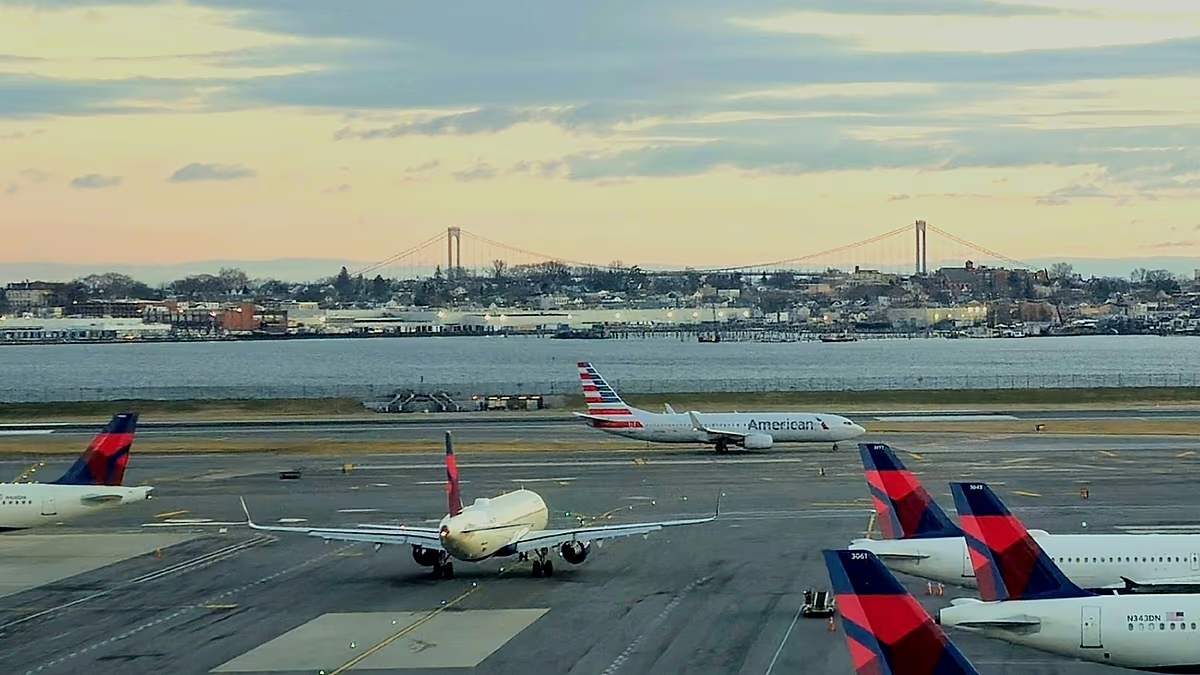The Sky Stands Still: America’s Air Travel Chaos Amid Government Shutdown
As the United States government shutdown stretched into its sixth week, the nation’s air travel system reached a breaking point on Sunday with more than 10,000 flights delayed and nearly 3,000 cancelled. These disruptions left hundreds of thousands of travelers stranded across the country, creating a logistical nightmare just as Thanksgiving—one of America’s busiest travel periods—approaches. The timing couldn’t be worse for both the airline industry and the countless families hoping to reunite for the holiday. Though the Senate voted late Sunday to advance a bill potentially ending the shutdown, Transportation Secretary Sean Duffy has cautioned that the air travel chaos won’t resolve immediately. Even with a political solution on the horizon, the nation’s air traffic control system will require time to recover, with delays and cancellations potentially continuing for days as the system gradually returns to normal operations.
For travelers caught in this unprecedented disruption, understanding your rights and options is essential. If your flight has been cancelled and you no longer wish to travel, U.S. law requires airlines to provide a full refund—even for non-refundable tickets—regardless of the cancellation reason. This refund must include any additional fees you paid for baggage, seat upgrades, or other extras you weren’t able to use. However, unlike in Europe, U.S. airlines aren’t legally obligated to offer additional compensation or cover accommodations and meals for stranded passengers, even when the airline is at fault. Each carrier has different policies for handling such situations, which the U.S. Department of Transportation compiles on its website, allowing travelers to understand what support they might receive during disruptions. While the legal protections may be limited, many airlines have implemented flexible policies to help passengers manage through this difficult period.
Fortunately for international travelers, the current crisis primarily affects domestic flights, with international services largely continuing as scheduled. Major U.S. carriers have been hit hardest, but each has introduced accommodations for affected customers. American Airlines has promised to “proactively reach out” to passengers on the more than 200 daily flights it’s cancelling, allowing penalty-free changes or refunds while maintaining long-haul and hub-to-hub routes. Delta Air Lines has extended its travel advisory to all 40 airports affected by flight reductions, permitting passengers booked between November 7-14 to rebook through November 21 without fare differences or cancel for full refunds—including basic economy tickets. United Airlines issued waivers for flights from ten airports (including Hong Kong) between November 6-13, allowing rebooking within six days or cancellation for full refunds. Despite cutting up to 269 flights on Tuesday alone, United still expects to operate approximately 4,000 daily flights throughout the disruption.
Southwest Airlines is taking a slightly different approach, automatically rebooking passengers affected by its more than 100 cancelled flights across 34 airports, while also offering refunds or penalty-free rebooking for trips between November 7-12. Alaska Air Group, which operates both Alaska Airlines and Hawaiian Airlines—popular options for long-haul flights and journeys to Hawaii—has issued a flexible travel waiver allowing passengers booked between November 7-14 to rebook for travel through November 21 without additional charges. Their international flights remain unaffected. For travelers facing delays or cancellations, preparation and quick action are crucial. Before heading to the airport, check your airline’s app or website to confirm your flight status, and consult the Federal Aviation Administration’s website for updated information on delays. If you’re already at the airport when problems arise, experts recommend joining the customer service queue while simultaneously contacting the airline by phone, messaging, or social media, where many carriers respond quickly to passenger concerns.
While airlines typically rebook affected passengers on their next available flight at no additional cost, the system-wide nature of the current crisis might necessitate considering alternative transportation methods such as trains, buses, or rental cars. As Kyle Potter of Thrifty Traveller noted, “As these problems expand the longer the shutdown drags on, it’s unlikely there will be one airline running on time if the rest of them are failing. It’s going to affect the entire system over time.” The root of this transportation crisis lies in the Federal Aviation Administration’s recent order for airlines to cut 4 percent of flights at 40 major airports due to staff shortages at air traffic control centers resulting from the government shutdown. These reductions are set to increase to 6 percent by Tuesday and reach 10 percent by November 14, creating a compounding effect on the nation’s air travel capacity as the situation continues.
The staffing challenges extend to 12 air traffic control towers nationwide, with Transportation Secretary Duffy revealing that the agency is currently short between 1,000 and 2,000 controllers. Alarmingly, controller retirements have jumped from approximately four per day before October 1 to as many as 15-20 daily since the shutdown began, further straining an already vulnerable system. Airlines for America, representing major U.S. carriers, estimates that more than four million passengers have had their travel plans disrupted since the shutdown began in October. The economic implications are equally staggering—if these conditions persist into Thanksgiving week, one of the country’s busiest travel periods when millions fly to visit family and friends, the cost to the U.S. economy could reach approximately €500 million per day. As the political standoff potentially moves toward resolution, millions of Americans are left hoping the skies will clear before the holiday season fully arrives.


